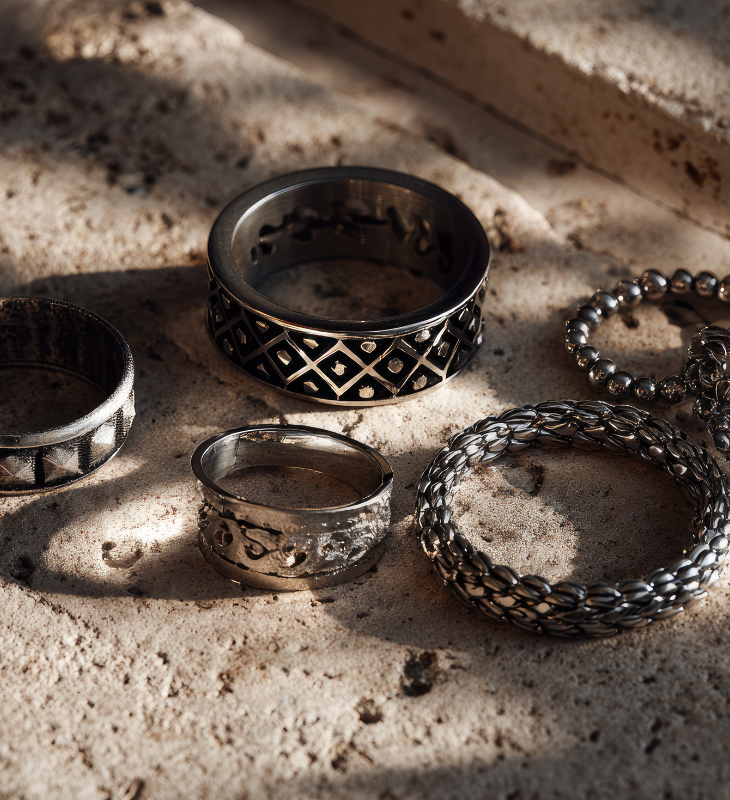
Stone and Metal Facts: A Friendly Guide to Jewelry That Fits Your Life
If you love jewelry but get lost in the jargon, this guide is for you. Think of it as your stylish shortcut to understanding the metals and stones you see most—how they look, how they wear, and how to care for them - so you can pick pieces that actually match your lifestyle.
Let’s start with metals, because the foundation matters. Solid 14K gold is the classic: warm, quietly luxe, and durable enough for daily wear without being too soft. If you want that golden glow without the solid-gold price, gold-filled and vermeil are smart middle paths - both use real gold layered over a base (gold-filled over brass; vermeil over sterling silver). The thicker the layer, the longer the finish lasts.
Modern brands increasingly love 316L stainless steel, especially with gold PVD. It’s hypoallergenic, tarnish-resistant, and impressively low maintenance - wipe it down and go. Sterling silver (925) brings bright, clean shine and can always be polished back to brilliance when it tarnishes. Titanium is featherlight and hypoallergenic with a sleek, modern edge. Tungsten carbide is the tank of jewelry: ultra scratch-resistant with a mirror polish or brushed finish—but note it usually can’t be resized, and hard drops can chip it.
Stones bring the story - and they’re not all equal in durability. Diamonds (natural or lab-grown) top the scale for hardness; lab options share the same chemistry and sparkle, often at a friendlier price. Moissanite offers intense fire (that rainbowy flash) and stands up beautifully to daily wear. Sapphires and rubies (both corundum) are also hard-wearing and come in more colors than you might expect.
Emeralds are breathtaking but delicate: often oil-treated and more brittle, they need gentle care. Opals are pure magic - iridescent and ethereal - but sensitive to heat and dryness. Pearls are classic and soft; treat them like silk: last on, first off. Quartz family favorites - amethyst, citrine, rose quartz - deliver clear color and great value. Turquoise and malachite are statement-makers but benefit from gentle handling and a no-soak rule.
So, how do you match materials to your life? If your skin is sensitive, reach for 316L stainless, titanium, solid gold, or quality vermeil. If you swim, sweat, or live on the go, stainless and titanium are nearly worry-free (try to keep all metals away from chlorine when you can). Prefer low-maintenance shine? Gold PVD on stainless, gold-filled, and tungsten are your friends. Want heirloom vibes? Solid gold, sterling silver, and natural gems never go out of style.
Care can be simple. Make jewelry the last thing you put on and the first thing you take off. Wipe pieces with a soft cloth after wear. Store them separately (silver loves anti-tarnish pouches). Skip extremes - chlorine, bleach, very hot water - and protect softer stones like opal, pearl, and emerald from rough handling and ultrasonic cleaners.
A few myths to leave behind: gold plating isn’t automatically “fake” - quality and thickness matter, and PVD/vermeil can go the distance. Lab diamonds are real diamonds; the origin is different, not the sparkle. And “hypoallergenic” isn’t a guarantee - check materials and look for 316L, titanium, solid gold, or verified nickel-free options.
Shopping becomes much easier when you ask for specifics: metal type (316L, 925, karat), plating method (PVD, vermeil, gold-filled), stone type and treatments, sizes in millimeters, and ring fit style (comfort fit vs. standard). For tungsten rings, confirm sizing carefully since most can’t be resized.



